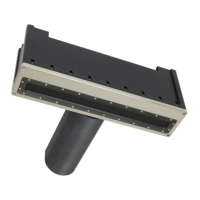13.9.2.2 Dual Head – Same Frequency – Alternating ping
To operate the dual sonar heads on the same frequency it is necessary to coordinate the transmit
and receive periods so there is no interference. Operating in the ‘Ping-Pong’ mode will halve the
ping rate for each head, but the user gains identical acoustic resolution (such as backscatter) for
both sonar heads. Please see Section 5.5.10
for head synchronisation settings.
13.9.2.3 Dual Head – Dual Frequency – Simultaneous ping
Offsetting the operating frequencies, of both heads, allows the user to ping both heads
simultaneously. The amount of frequency separation depends mostly on the manner in which the
sonar heads have been installed and, to a lesser extent, environmental factors. Usually, the
maximum separation required is 40 – 80 kHz and can be less.
Figure 165: Dual-sonar head ping modes
13.9.2.4 Dual Head with Two SIM Boxes
If two SIM boxes are used, only one is the master or primary (SIM1). SIM1 will be the SIM to take in
all of the serial data as well as the PPS; SIM2 only provides power to the second sonar head. SIM2 is
connected to SIM1 via an Ethernet cable to one of the RJ45 ports on SIM1. In the figure, below, the
bottom SIM is the primary SIM1, which takes in all of the serial data as well as timing data. The
upper SIM is the secondary SIM2 that provides power to the sonar head and passes data to the
primary SIM.
Figure 166: Dual Head - Dual SIM external interfacing
Page 166 of 210
Version 5.0 Rev r002
Date 05-08-2014
Part No. 96000001

